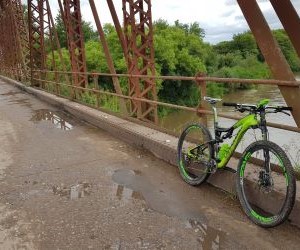Learn how to deal with punctures on long rides with prevention tips, repair techniques, and smart gear choices to keep rolling without stress.
HOW DO I REDUCE WIND RESISTANCE WHEN CYCLING?
Wind resistance is the invisible rival every cyclist battles, especially on flat roads and descents. It can account for up to 80% of the effort required at higher speeds, making it the single biggest factor slowing you down. Reducing drag isn’t about expensive equipment alone—it’s about smart positioning, efficient clothing, and refined technique. This article explores practical, science-backed strategies to cut through the wind, ride faster, and conserve precious energy for when it matters most.

Optimizing body position
Your body is the largest contributor to aerodynamic drag on the bike. Small adjustments to position can make a massive difference in speed and efficiency, often more than upgrading components. Cyclists who learn to adapt their posture for aerodynamics gain free speed without extra effort.
Lowering your torso
The lower your torso, the smaller your frontal area and the less wind you catch. Riding with bent elbows and a flat back reduces drag substantially. However, comfort and sustainability matter—don’t sacrifice breathing or control for an overly aggressive posture. Gradually adapt to a lower position during training to build flexibility and endurance in the core.
Hand and arm placement
Using the drops on road handlebars improves aerodynamics compared to the tops or hoods. Keeping arms tucked in close narrows your profile further. Riders in time trials or triathlons benefit from aerobars, which allow an even more streamlined forearm position, though this requires practice for stability.
Train flexibility to sustain a lower torso position.
Ride in the drops for significant drag reduction.
Keep arms tucked close to the body.
Consider aerobars if racing against the clock.
Body position adjustments can feel uncomfortable at first, but with practice, they become second nature. For many cyclists, this is the single most effective—and cost-free—way to reduce wind resistance.
Choosing aerodynamic gear
While body position matters most, equipment choices also influence aerodynamics. Advances in cycling gear allow riders to save watts without expending extra effort, making the right gear a worthwhile investment for those serious about performance.
Clothing and helmets
Loose clothing acts like a parachute, catching wind and slowing you down. Aerodynamic jerseys and bibs use smooth, tight-fitting fabrics to minimize drag. Similarly, aero helmets with sleek shapes reduce turbulence around the head, especially at higher speeds. The difference may be marginal individually but adds up over long rides or races.
Wheels and bike setup
Deep-section wheels cut through the air more efficiently, though they can be tricky in crosswinds. Aero frames, hidden cables, and integrated cockpits further reduce drag. Tire choice also matters—narrower, high-pressure tires with smooth treads create less rolling resistance and complement aerodynamic gains.
Wear snug, aerodynamic cycling kits.
Use aero helmets for time trials and races.
Consider deep-section wheels for speed gains.
Keep bike cables and accessories as clean as possible.
Aerodynamic gear doesn’t replace training or smart riding, but it enhances your effort. Even small watt savings from clothing, helmets, and wheels can make a big difference over long distances or in competitive scenarios.
Strategic riding techniques
Beyond posture and gear, how you ride influences your aerodynamic profile. Drafting, pacing, and positioning relative to wind direction all play critical roles in reducing resistance and conserving energy for decisive moments.
Drafting and group riding
Riding behind another cyclist can reduce wind resistance by up to 30%. In group rides, staying within the draft allows you to conserve energy while maintaining higher speeds. Rotating smoothly through pacelines spreads the workload and maximizes efficiency for the whole group.
Managing headwinds and crosswinds
When facing headwinds, lower your position and maintain steady effort rather than pushing harder. In crosswinds, riding in an echelon formation with others provides shelter. Solo riders can reduce resistance by hugging the edge of the road to minimize wind exposure.
Draft behind other cyclists to save energy.
Use pacelines for efficient group riding.
Adjust posture when facing headwinds.
Position smartly during crosswinds with echelon tactics.
Strategic riding can make the difference between finishing strong and burning out early. Learning how to use wind to your advantage ensures you ride smarter, not harder, regardless of conditions.
YOU MAY ALSO BE INTERESTED






